Past meets future. Or: tradition and innovation. Or, alternatively, from sail to motor. You’re spoilt for choice when it comes to the titles to accompany the new Spirit Yachts product. If you look at it closely, you’ll immediately realise that this is a truly unusual project.
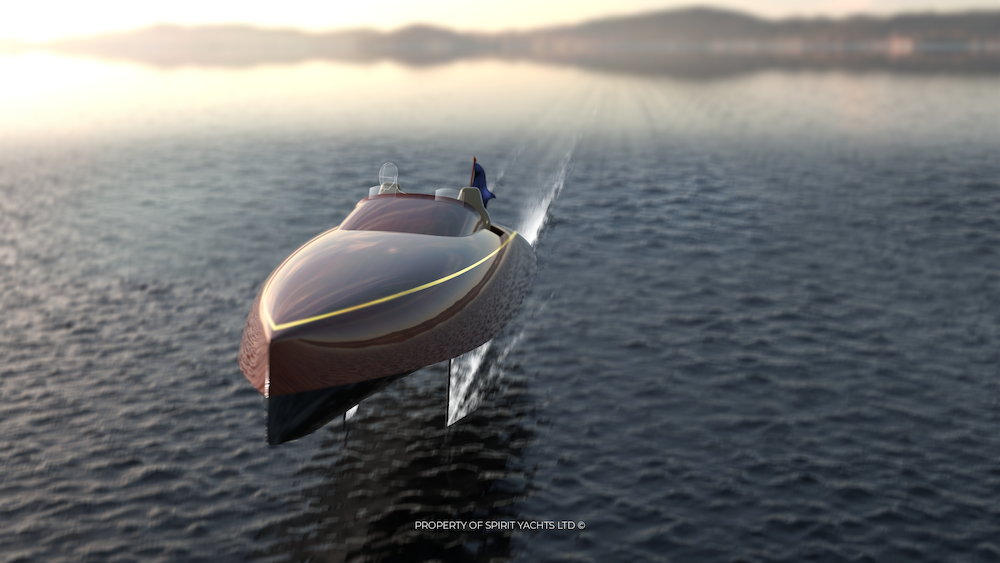
A project, however, that within a few months will become a sailing reality. Or, to put it better, a flying one. Yes, because this 35-foot craft has been designed to sail in foil trim. But let’s go in order. It all started with the owner of Geist, a 30-metre maxi sailing yacht also built by Spirit Yachts, wanting a chase boat. Not a support boat like those currently on the market. In this case he had something special and unique in mind. This gave rise to the concept of a hull that looks retro but conceals a concentration of high technology inside.
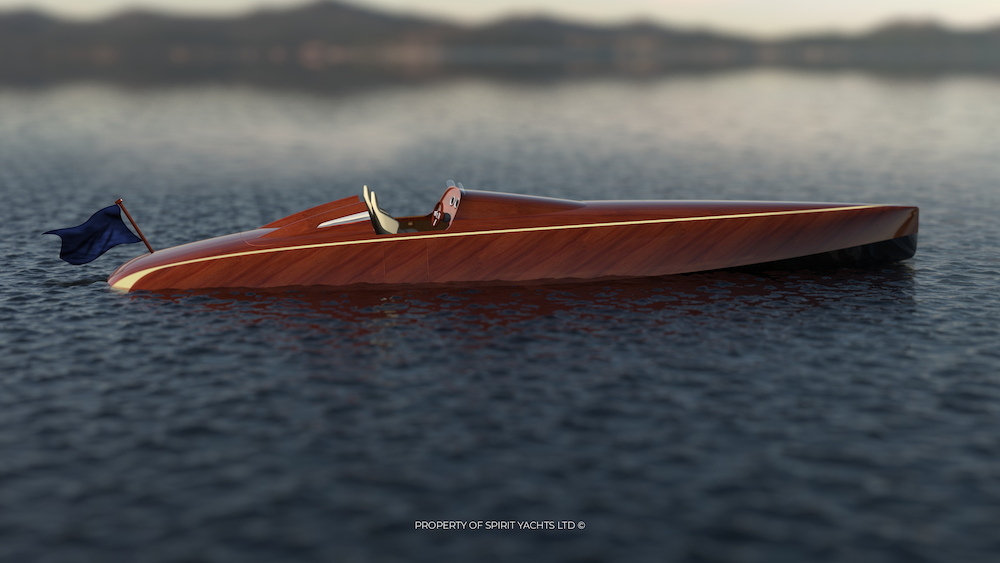
The external lines
The clean, essential design of the lines brings to mind those that characterised the race boats of the 1920s. In this specific case, however, the reference is to a precise name: Baby Bootlegger. Designed by George Crouche and built at the Henry B. Nevins yard in New York, this wooden runabout won the legendary APBA Gold Cup in Detroit in 1924 and 1925. But in addition to its sporting merits, Baby Bootlegger also came into the limelight because it was powered by an eight-cylinder V engine from Hispano-Suiza, produced under licence in the United States by Wright-Martin, and made headlines for flying many famous military fighters, such as the SPAD S.XIII, during the First World War. The link with flight, this time on water, is back in the news with the project developed by Spirit Yachts.
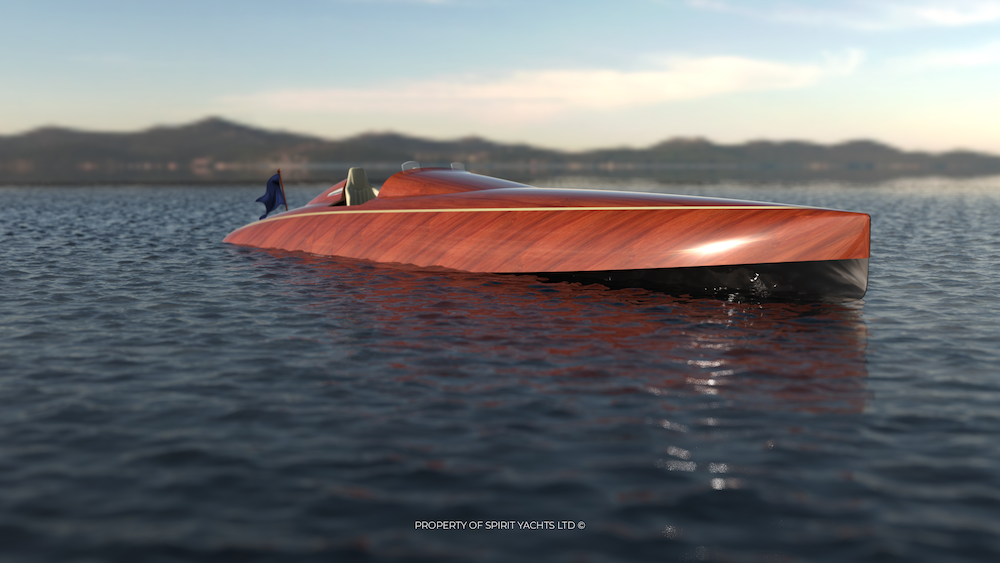
A hi-tech heart
The Suffolk-based yard has also involved BAR Technologies, another Anglo-Saxon company that has been entrusted with the task of overseeing all the foils and in-flight management and control systems. BAR Technologies is no stranger to this field, having taken part in the America’s Cup, the 35th edition to be precise, alongside Sir Ben Ainslie. In the nautical field, BAR has also worked with Princess on the development of the Active Foil System for the R35.
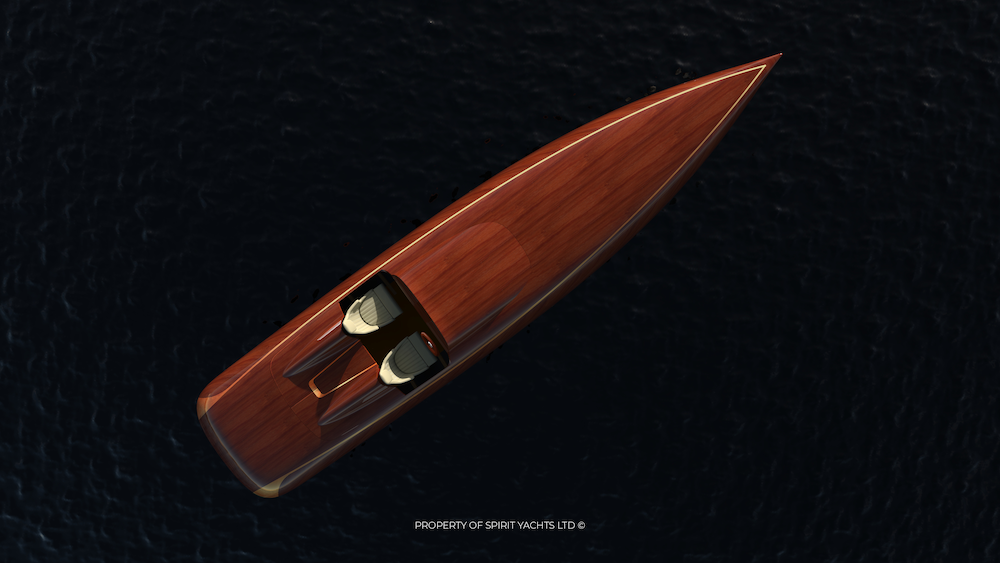
The electric propulsion system combined with three aluminium foils, two on the sides and a third in a T shape (similar to those seen on the AC75s in the last America’s Cup) which will also act as a rudder, will allow Spirit 35 to lift off at 14 knots. In terms of performance, this maritime supercar is credited with a top speed of around 30 knots and a range of 100 nautical miles at this speed. “Lately, interest in sustainable mobility at sea has been leading to major changes in the nautical sector. That’s why we are proud to be working with BAR Technologies to chart a new course in this area. BAR’s background in high-tech racing made them the ideal partner for this project, where tradition and innovation combine to create an elegant yet modern vessel,” commented Sean McMillan, CEO and Head of Design at Spirit Yachts.
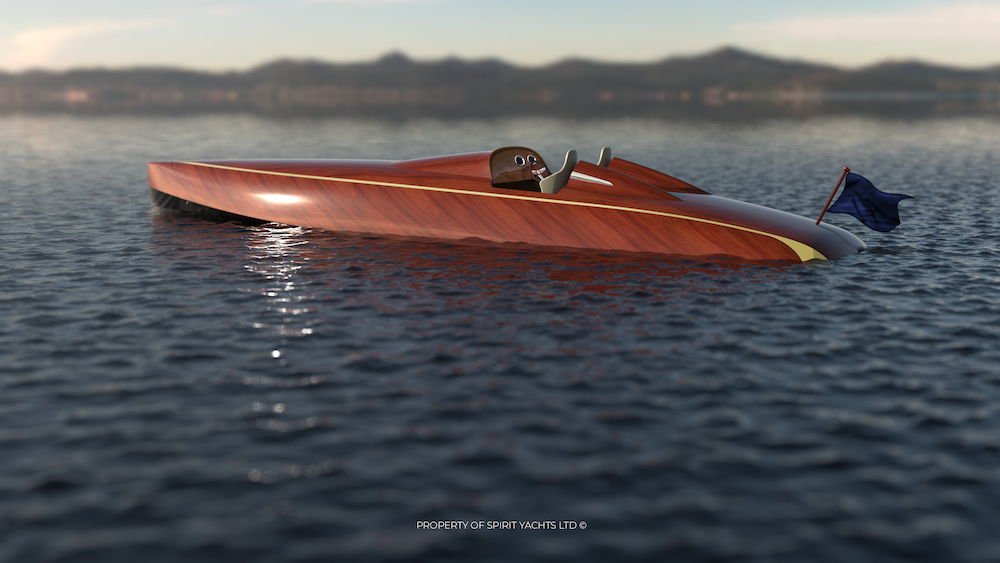
The construction
We’ll have to wait a few more months before we see her sail or fly. Spirit 35 is currently under construction at the Ipswich facility and is scheduled for delivery by June this year. The hull will be made from Alaskan yellow cedar combined with carbon fibre inserts to give the structure greater rigidity, while the external surfaces will be clad in African Sipo with a glossy varnish that evokes mahogany. There are two deck configurations: a more sporty two-seater spider-style one and a second one with a sofa for six and a table for guests and friends. In terms of measurements, the Spirit 35 is 10.5 metres long, has a maximum beam of 2.1 metres and a total weight of 2.4 tonnes.
Matteo Zaccagnino






